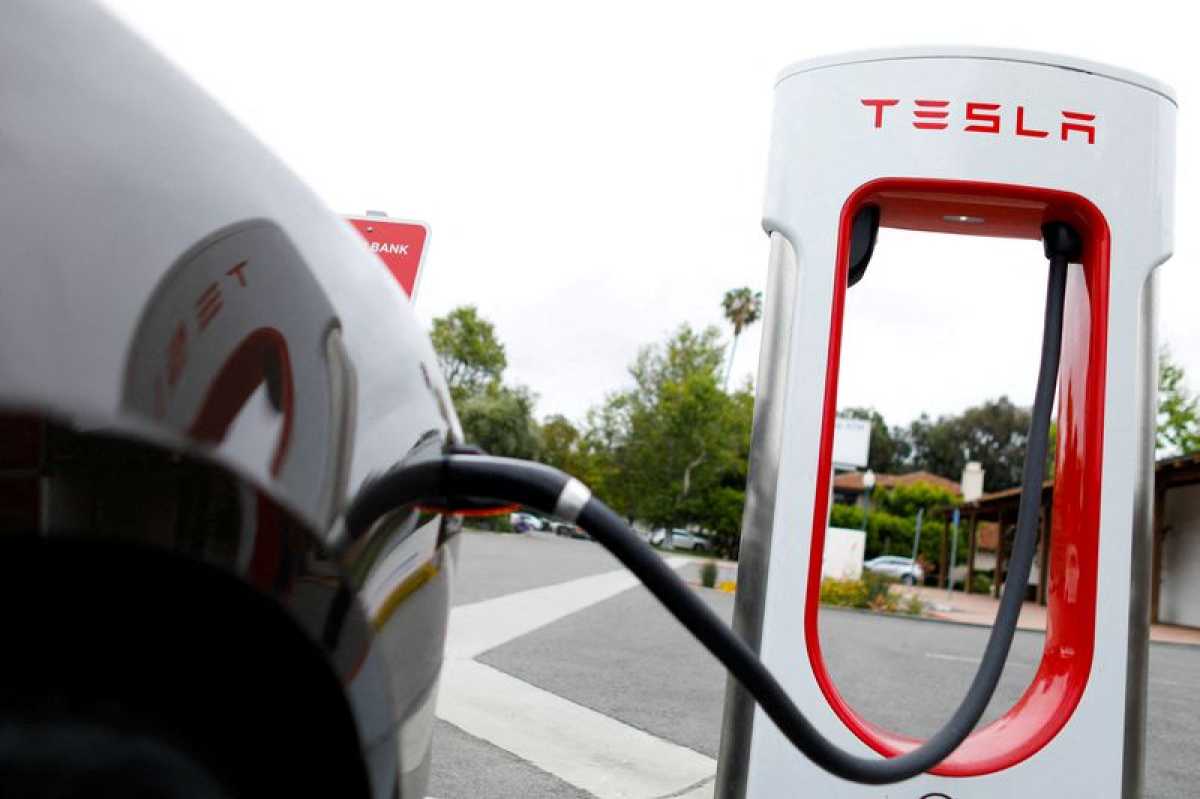Business
Tesla Misses Q4 Revenue and Profit Estimates as Automotive Growth Slows

Tesla, the electric vehicle manufacturer led by CEO Elon Musk, reported its fourth-quarter revenue and profit, falling short of analysts’ expectations on Thursday. The company’s automotive revenue only saw a 1% increase compared to the previous year, leading to a nearly 5% drop in Tesla’s stock price after hours.
In the fourth quarter, total revenue reached $24.3 billion, representing a 3% growth. However, the operating margin for the quarter decreased to 8.2% from the previous year’s 16%, although it was slightly higher than the 7.6% in the prior quarter.
The growth in auto revenue was hindered by lower average selling prices caused by significant price cuts globally in the second half of the year. The net income for the quarter doubled to $7.9 billion, primarily due to a noncash tax benefit of $5.9 billion.
In its investor presentation, Tesla warned that the vehicle volume growth for 2024 “may be notably lower” than the previous year due to the company’s focus on launching its upcoming “next-generation vehicle” in Texas. Musk described the Cybertruck, which was recently made available for purchase, as Tesla’s best product ever and a “head-turner.” He estimated the company’s delivery of approximately a quarter-million Cybertrucks annually.
Despite other U.S. automakers’ challenges in producing and selling a high volume of electric vehicles last year, Tesla reported impressive numbers, with 484,507 deliveries in the fourth quarter and over 1.8 million for the entirety of 2023.
Tesla’s energy division, which sells solar energy generation and energy storage systems, experienced a 54% increase in revenue, reaching $6.04 billion. The company’s “Services and Other” revenue also rose by 37% to $8.32 billion.
Operating income declined to $2.1 billion in the quarter, with Tesla citing the reduced average sales price of vehicles and higher operating expenses, partially driven by research and development investments. Tesla recently increased wages for its hourly factory employees in the U.S. to align with competitors such as General Motors, Ford, and Stellantis, whose employees are represented by the United Auto Workers.
Tesla also announced the release of its Full Self Driving Beta software, marketed as a premium driver assistance feature. However, Musk emphasized that the software does not make Tesla vehicles autonomous and still requires an attentive driver behind the wheel.
Regarding future plans, Musk expressed his desire to own 25% of Tesla to avoid being voted out by proxy advisory firms ISS and Glass Lewis, whom he referred to as ISIS, citing challenges they pose. He also discussed Tesla’s ambitions to develop a humanoid robot called Optimus, claiming it could surpass the value of all other Tesla products combined. While competitors like Boston Dynamics, Agility Robotics, and Figure are already in the market, Musk believes Optimus will be the most advanced humanoid robot worldwide. Expected to ship next year, specific capabilities and costs were not disclosed.
As of the end of 2023, Tesla reported having 54,892 Supercharger connectors across 5,952 stations worldwide.
This news comes as Tesla’s shares have dropped around 16% year-to-date, following a remarkable surge in 2023.












